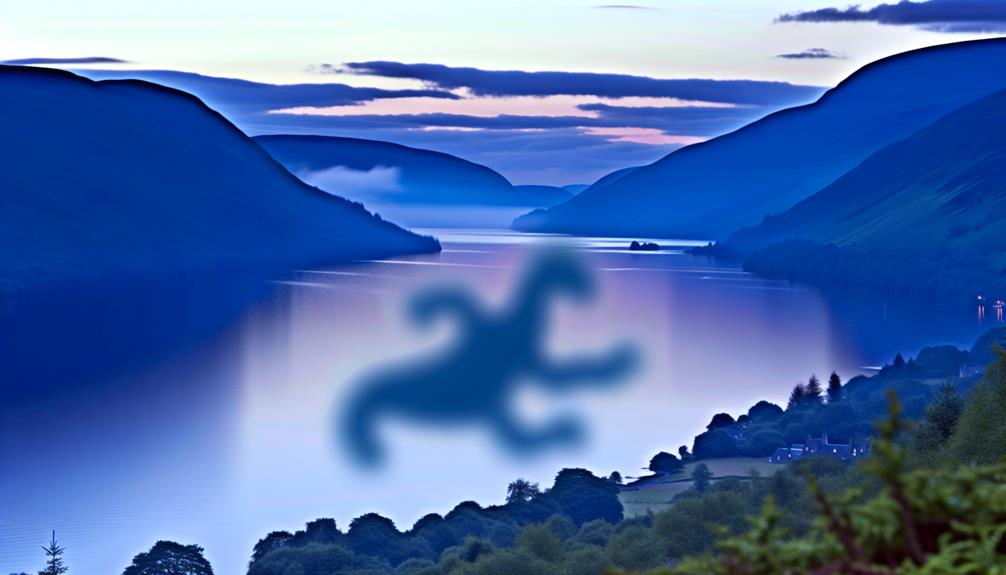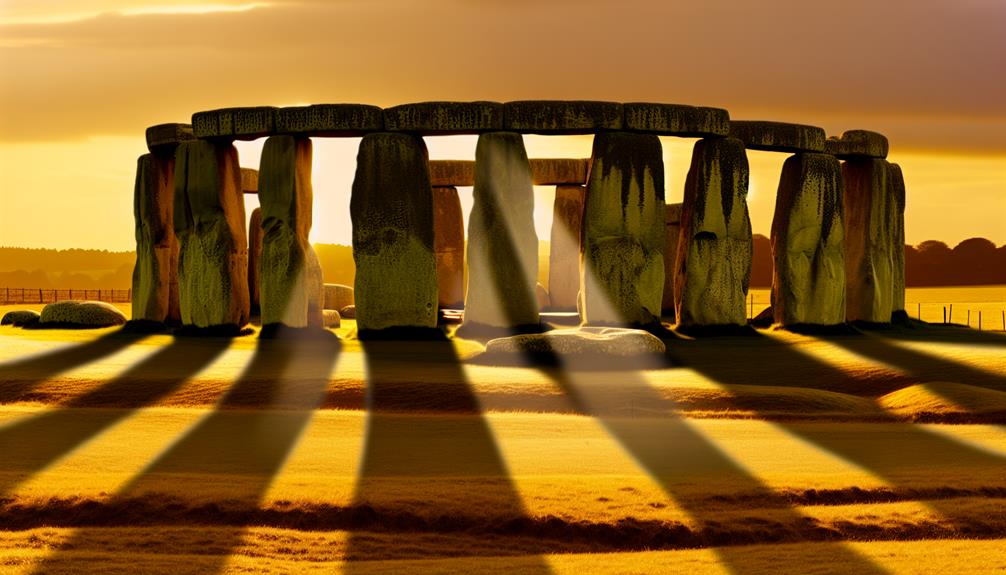Nestled in the heart of Japan, Mount Fuji's allure extends far beyond its impressive stature. This iconic landmark, steeped in centuries of tradition and folklore, offers a glimpse into the country's rich cultural tapestry. As visitors gaze upon its snow-capped peak and explore the surrounding landscapes, they are beckoned to uncover the hidden stories and spiritual significance that have made Mount Fuji a cornerstone of Japanese identity. But what truly lies beneath the surface of this majestic mountain, drawing countless travelers to its foothills year after year?
Key Takeaways
- Sacred site with 600,000 years of history.
- UNESCO World Heritage site since 2013.
- Symbol of national identity in Japan.
- Muse for art, literature, and spiritual seekers.
- Offers diverse climbing routes for adventurers.
Historical Background
Nestled in the rich tapestry of Japan's history, the origins of Mount Fuji's significance can be traced back to ancient times when it served as a sacred site for spiritual practices and artistic inspiration. Known as 'Fujisan' in Japanese, this iconic stratovolcano has long been revered by the Japanese people. Its origins date back to the formation of Japan's landscape around 600,000 years ago, making it a prominent geological feature in the region.
In historical context, Mount Fuji has played a significant role in shaping Japan's cultural and religious beliefs. It was believed to be a gateway to the afterlife, with pilgrims undertaking spiritual journeys to reach its summit. The mountain's majestic presence inspired numerous artists, poets, and writers throughout history, leading to the creation of various masterpieces depicting its beauty.
Furthermore, Mount Fuji's significance extends beyond its spiritual and artistic influence. It has been a symbol of national identity and pride for the Japanese people, representing resilience, strength, and harmony with nature. Its inclusion in UNESCO's World Heritage list in 2013 further solidified its status as a cultural treasure.
In essence, the origins of Mount Fuji's significance lie in its deep-rooted connection to Japan's historical and cultural heritage. From ancient spiritual practices to significant admiration, the mountain continues to captivate hearts and minds, embodying the essence of Japan's rich history and traditions.
Cultural Significance
Mount Fuji in Japan holds profound cultural significance, embodying a timeless symbol of spiritual reverence and national pride. Its majestic presence has inspired a myriad of artistic interpretations and traditional ceremonies over the centuries. Here are some aspects that contribute to the cultural significance of Mount Fuji:
- Artistic Interpretations: Throughout history, Mount Fuji has been a muse for countless artists, poets, and writers. Its symmetrical beauty and serene aura have been captured in paintings, haiku poems, and literature, reflecting the deep spiritual connection the Japanese people have with this iconic mountain.
- Traditional Ceremonies: Various Shinto rituals and Buddhist practices are intertwined with Mount Fuji. Pilgrimages to its summit, prayers for safety and prosperity, and rituals to honor the mountain's divinity are all part of the rich tapestry of traditional ceremonies associated with Mount Fuji.
- Festive Celebrations: The annual Fujiyoshida Fire Festival and other seasonal celebrations pay homage to Mount Fuji. These vibrant events bring communities together to celebrate the mountain's enduring presence and significance in Japanese culture.
- Modern Influences: In contemporary Japan, Mount Fuji continues to be a symbol of national identity and pride. Its image adorns countless products, from souvenirs to corporate logos, showcasing how modern influences have kept Mount Fuji relevant in today's society.
Mount Fuji's cultural significance goes beyond being a mere geographical landmark; it is a symbol deeply ingrained in the heart of Japan's cultural heritage.
Geographical Features
Amidst the picturesque landscape of Honshu Island in Japan, lies the iconic Mount Fuji, boasting a diverse range of geographical features that captivate both locals and visitors alike. Mount Fuji is a stratovolcano, characterized by its symmetrical cone shape, which is the result of repeated volcanic activity over the years. Its last eruption occurred in 1707, contributing to the rich soil that supports the surrounding biodiversity.
The climate around Mount Fuji varies, with the lower slopes experiencing temperate conditions while the higher altitudes are often covered in snow. This contrast in climate supports a wide range of flora and fauna, making the region a hotspot for biodiversity. Conservation efforts are in place to preserve the unique species that call Mount Fuji home, including Japanese macaques, deer, and various bird species.
The lush forests that cover the lower slopes of Mount Fuji provide a habitat for diverse plant species, adding to the area's ecological significance. Efforts to balance tourism with conservation have led to designated protected areas around the mountain, ensuring that its natural beauty remains unspoiled for future generations to enjoy.
Climbing Routes
Exploring the various climbing routes on Mount Fuji offers adventurers a chance to experience the awe-inspiring beauty of this iconic stratovolcano from different perspectives. Whether you are a novice hiker or an experienced mountaineer, Mount Fuji provides a range of routes catering to different difficulty levels, each offering unique scenic views that will leave you breathless.
- Yoshida Trail: One of the most popular routes, offering stunning views of the sunrise from higher altitudes.
- Subashiri Trail: Known for its diverse landscapes, from dense forests to rocky terrain, providing a challenging yet rewarding climb.
- Gotemba Trail: A less crowded route, perfect for those seeking a more serene experience, with breathtaking panoramic views of the surrounding landscapes.
- Fujinomiya Trail: The shortest route up the mountain, ideal for experienced climbers looking for a quicker ascent and stunning views of the Pacific Ocean.
- Snow Season Route: Only recommended for skilled climbers during the winter months, offering a unique and challenging experience with snow-capped vistas.
Before starting on your climb, remember to prioritize safety by checking weather conditions, packing essential gear like sturdy hiking boots, warm clothing, and sufficient food and water. Additionally, understanding and adhering to safety precautions, such as acclimatizing properly and recognizing altitude sickness symptoms, is vital for a successful ascent of Mount Fuji.
Spiritual Importance
With a rich history steeped in tradition and reverence, the spiritual significance of Mount Fuji transcends its physical stature, enchanting pilgrims and visitors alike with its profound cultural and religious importance. Mount Fuji is not only a majestic natural wonder but also a place deeply intertwined with Japanese spirituality and folklore. Many pilgrims visit the mountain seeking spiritual enlightenment, viewing it as a sacred site where the heavens meet the earth.
For centuries, Mount Fuji has been a hub for meditation retreats, attracting seekers looking to connect with nature and find inner peace. The serene surroundings, crisp mountain air, and awe-inspiring views make it an ideal location for contemplation and self-reflection. Numerous meditation centers and temples around Mount Fuji offer retreats and mindfulness practices, allowing visitors to immerse themselves in the tranquility of this sacred place.
Moreover, Mount Fuji is dotted with pilgrimage sites that hold significant religious importance for the Japanese people. These sites are steeped in ancient rituals and traditions, drawing pilgrims who seek blessings, purification, and spiritual growth. Whether it's walking the pilgrimage trails or participating in traditional ceremonies, visitors can experience firsthand the spiritual essence that permeates this iconic mountain. Essentially, Mount Fuji serves as a beacon of spiritual energy, inviting all who visit to engage in a journey of introspection and enlightenment.
Travel Tips
When planning a visit to Mount Fuji, travelers should prioritize obtaining up-to-date information on weather conditions and accessibility to guarantee a smooth and enjoyable experience. Mount Fuji's weather can change rapidly, so it's essential to pack essentials such as waterproof clothing, sturdy hiking boots, and plenty of water.
To truly immerse yourself in the experience, consider trying the delicious local cuisine available around the area. Indulge in dishes like Hoto, a hearty noodle soup perfect for refueling after a day of exploration, or treat yourself to freshly made mochi sweets that melt in your mouth.
Here are five travel tips to enhance your Mount Fuji adventure:
- Stay Hydrated: Carry a reusable water bottle to stay hydrated throughout your journey.
- Capture the Moments: Don't forget your camera to capture the breathtaking views and create lasting memories.
- Respect the Environment: Help preserve the natural beauty of Mount Fuji by following designated trails and disposing of waste responsibly.
- Embrace the Culture: Engage with the locals, learn about their traditions, and savor the unique flavors of the region.
- Plan Ahead: Check for any travel restrictions or cultural events happening during your visit to make the most of your time at Mount Fuji.
Frequently Asked Questions
What Is the Best Time of Day to See Mount Fuji's Reflection in a Nearby Lake?
The best time of day to capture stunning reflections of a majestic peak in a serene lake varies depending on the location.
For sunset photography at Lake Kawaguchi, aim for the evening hours when the sun casts a warm glow on the water's surface.
Conversely, for morning reflections at Yamanaka Lake, early hours are ideal as the calm waters mirror the beauty of the surroundings.
Timing is essential to achieving enchanting images of nature's splendor.
Are There Any Restrictions on Photography or Drone Usage Around Mount Fuji?
Drone regulations and photography guidelines are vital considerations for those capturing images in various locations. Many areas have restrictions on drone usage due to safety and privacy concerns. Photography guidelines often dictate respect for local customs, protection of wildlife, and preservation of natural landscapes.
Understanding and adhering to these regulations not only guarantees compliance with the law but also promotes responsible and ethical photography practices.
Can Visitors Participate in Any Traditional Ceremonies or Rituals on the Mountain?
Visitors have the opportunity to partake in various traditional ceremonies and rituals on the mountain, providing a unique cultural experience. From Shinto blessings to tea ceremonies, these practices offer a deep connection to the spiritual heritage of the region.
Engaging in these ceremonies can enhance one's understanding of local customs and beliefs, fostering a sense of reverence for the natural beauty that surrounds them.
Is It Possible to See the Sunrise From the Summit of Mount Fuji?
Witnessing a sunrise from the summit of a mountain offers unparalleled views and a sense of accomplishment. However, factors such as cloud coverage can impact visibility, potentially obstructing the sunrise experience.
Visitors should consider alternative locations or timings to maximize their chances of enjoying the sunrise views. Planning ahead, checking weather forecasts, and being flexible with travel plans can help guarantee a memorable sunrise experience.
Are There Any Local Legends or Myths Associated With Mount Fuji?
Local legends and myths often play a significant role in shaping the cultural identity of a region. Folklore tales and historical myths associated with certain landmarks can provide insight into the supernatural beliefs of a community. These stories hold cultural significance, offering a glimpse into the traditions and values of the people who inhabit the area.
Through these narratives, individuals can connect with the past and gain a deeper understanding of the place they call home.
Conclusion
To sum up, Mount Fuji stands as a colossal marvel of nature, embodying Japan's rich history and cultural significance. Its towering presence commands reverence and awe, drawing visitors from around the world to experience its majestic beauty.
With diverse climbing routes offering unparalleled views and a spiritual retreat for pilgrims seeking enlightenment, Mount Fuji captivates the soul and leaves a lasting impression on all who gaze upon its grandeur.

